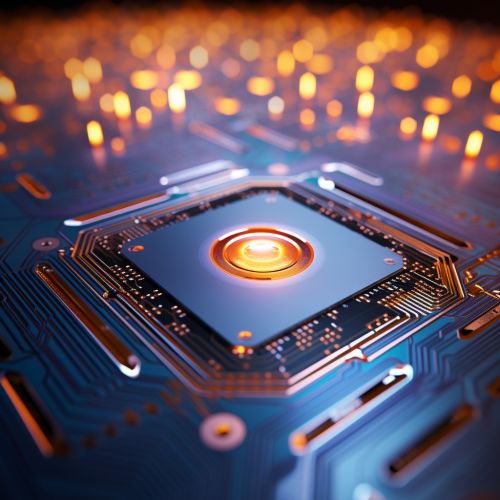Biosensors
Introduction
Biosensors are analytical devices that combine a biological component with a physicochemical detector. The sensitive biological element, e.g. tissue, microorganisms, organelles, cell receptors, enzymes, antibodies, nucleic acids, etc., is a biologically derived material or biomimetic component that interacts with, binds with, or recognizes the analyte under study. The biologically sensitive elements can also be created by biological engineering. The transducer or the detector element, which transforms one signal into another one, works in a physicochemical way: optical, piezoelectric, electrochemical, thermometric, magnetic, micromechanical, etc. Their use in various fields such as medicine, food safety, environmental monitoring, and even defense has been growing rapidly due to their ability to provide real-time, on-site analysis.
History
The history of biosensors dates back to the early 20th century, with the development of the first enzyme electrodes by Leland C. Clark and Champ Lyons in 1962. This marked the birth of biosensors. Their work laid the foundation for the development of the glucose biosensor, which is one of the most successful and widely used biosensors today. The term "biosensor" is often used to cover sensor devices used in order to determine the concentration of substances and other parameters of biological interest even where they do not utilize a biological system directly.
Types of Biosensors
There are several types of biosensors, each with its own unique characteristics and applications. These include:
Enzyme-Based Biosensors
Enzyme-based biosensors use enzymes as the biological sensing element. The enzyme, upon interaction with the analyte, produces a product which can be measured by standard analytical techniques. These biosensors are often used in clinical applications for measuring compounds such as glucose, lactate, and cholesterol.
Immunosensors
Immunosensors are based on the specific binding affinity of antibodies for their antigens. These biosensors are highly specific and sensitive, making them ideal for applications in clinical diagnostics, food safety, and environmental monitoring.
DNA Biosensors
DNA biosensors, also known as genosensors, use DNA strands as the biological sensing element. These biosensors are used for detecting specific DNA sequences, which is useful in applications such as genetic testing, disease diagnosis, and forensic science.
Cell-Based Biosensors
Cell-based biosensors use living cells as the biological sensing element. These biosensors can be used for detecting a wide range of analytes, including toxins, drugs, and other bioactive compounds. They are often used in drug discovery and toxicity testing.
Working Principle
The working principle of a biosensor involves the intimate coupling of a biological recognition element that can interact or bind with an analyte, and a transducer which can convert this interaction into a measurable signal. The biological recognition element can be an enzyme, an antibody, a nucleic acid, or a whole cell, among others. The transducer can be electrochemical, optical, thermometric, or piezoelectric.
Applications
Biosensors have a wide range of applications in various fields:
Medical Applications
In medicine, biosensors are used for various purposes such as glucose monitoring in diabetes patients, drug discovery, and monitoring of various other diseases.
Environmental Monitoring
Biosensors are used in environmental monitoring for the detection of pollutants and other hazardous substances in the environment. They are used for the detection of heavy metals, pesticides, and other toxic substances.
Food Safety
In the field of food safety, biosensors are used for the detection of pathogens, toxins, and other harmful substances in food products.
Defense
Biosensors are also used in defense for the detection of biological warfare agents.
Future Perspectives
The future of biosensors looks promising with the advancement of technology. With the advent of nanotechnology, the sensitivity and performance of biosensors have been greatly improved. Moreover, the integration of biosensors with information technology has opened up new possibilities for real-time monitoring and data analysis. However, there are still challenges to be addressed, such as the development of more robust, reliable, and cost-effective biosensors.
See Also


